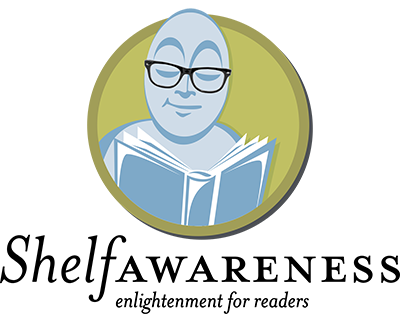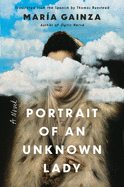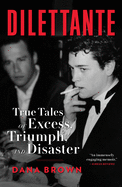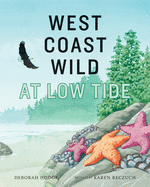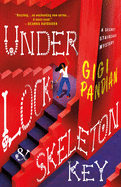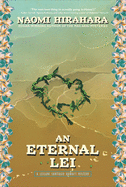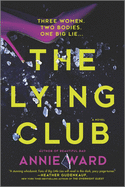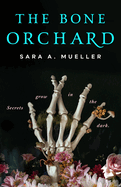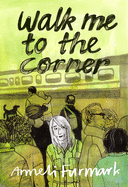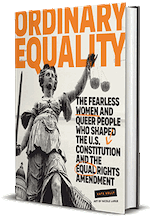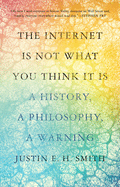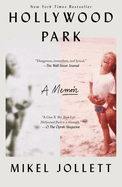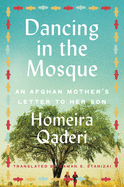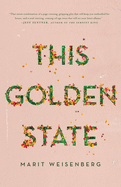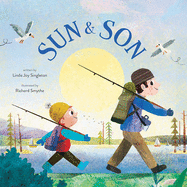Friday, March 25, 2022
At a recent American Booksellers Association virtual panel called "Storytelling in the Cultural Moment," a theme that echoed was "staying curious." Moderator Emma Straub (All Adults Here) observed that "novels are a product of their time," and asked the authors about their influences.
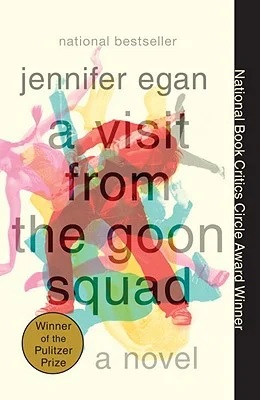 Jennifer Egan began The Candy House (coming from Scribner, April 5) in 2012 and had posited in it an event called "The Rupture." Her book A Visit from the Goon Squad (Anchor, $17) had its own "rupture": 9/11. At first, Egan thought the 2016 election would be the Rupture, then Covid came along. For her as a novelist, such a moment always seems to be in the offing.
Jennifer Egan began The Candy House (coming from Scribner, April 5) in 2012 and had posited in it an event called "The Rupture." Her book A Visit from the Goon Squad (Anchor, $17) had its own "rupture": 9/11. At first, Egan thought the 2016 election would be the Rupture, then Covid came along. For her as a novelist, such a moment always seems to be in the offing.
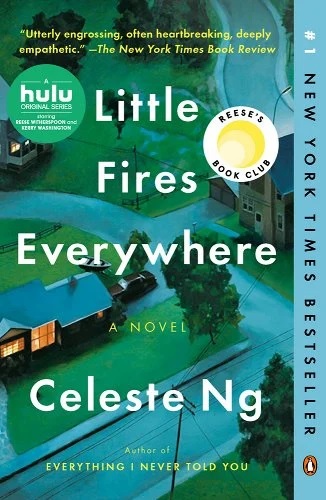 Celeste Ng (Little Fires Everywhere, Penguin Books, $17) was also working around a kind of "rupture" in 2016, when she started Our Missing Hearts (Penguin, October 4). She doesn't usually include current events, but seeing so much in the news about attacks on Asian Americans, she said, "It worked its way into the book and became a seed around which the novel arranged itself."
Celeste Ng (Little Fires Everywhere, Penguin Books, $17) was also working around a kind of "rupture" in 2016, when she started Our Missing Hearts (Penguin, October 4). She doesn't usually include current events, but seeing so much in the news about attacks on Asian Americans, she said, "It worked its way into the book and became a seed around which the novel arranged itself."
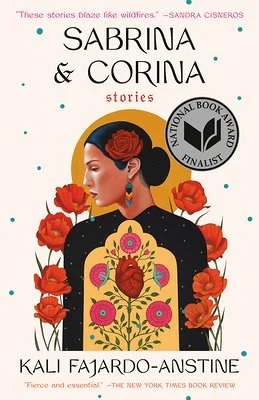 Kali Fajardo-Anstine was working on her novel Woman of Light (One World, June 7) in 2005 but set it aside while earning her MFA because her instructors wanted short stories; she published her thesis as Sabrina & Corina (One World, $17), a 2019 NBA finalist. At the height of Covid, "with marches snaking by, I watched the distance between my two timelines [in Woman of Light] severed," she said. Research has become an obsession, with her family the best resources: her great-grandfather from the Philippines; her great-grandmother born in 1912.
Kali Fajardo-Anstine was working on her novel Woman of Light (One World, June 7) in 2005 but set it aside while earning her MFA because her instructors wanted short stories; she published her thesis as Sabrina & Corina (One World, $17), a 2019 NBA finalist. At the height of Covid, "with marches snaking by, I watched the distance between my two timelines [in Woman of Light] severed," she said. Research has become an obsession, with her family the best resources: her great-grandfather from the Philippines; her great-grandmother born in 1912.
Egan embraced this idea of curiosity: "Fiction for me is about asking questions and not answering them," whereas her previous work as a journalist was about fact-finding. Ng concurred, "that feeling of discovery, that sense of there could be more to the world than we know--that's why I write fiction." --Jennifer M. Brown, senior editor, Shelf Awareness
Portrait of an Unknown Lady
by María Gainza, transl. by Thomas Bunstead
Portrait of an Unknown Lady, written by art critic María Gainza (Optic Nerve) and translated from the Spanish by Thomas Bunstead, is a mesmerizing deep dive into the art world through a neo-noir female detective's quest to find a forger in Buenos Aires.
An unnamed female narrator is left reeling by the death of her employer and longtime mentor, Enriqueta Macedo. Enriqueta, along with the narrator, spent decades running a business that authenticated portraits supposedly painted by famed artist Mariette Lydis, but were actually created by a mysterious figure known only as Renée. Chasing meaning after Enriqueta's death, the narrator becomes fixated on writing a biography of Renée and attempts to piece together the scraps of her life since her disappearance years earlier.
Dreamy and atmospheric, Portrait of an Unknown Lady is a short read, deliberate in its pacing. The unnamed narrator leads readers through a labyrinth of clues about Enriqueta, Lydis and Renée, culling information from paintings, fragmented interviews and auction catalogues. These dizzying but vivid details deliver more entanglement than solution, morphing Renée herself into the absent center that nonetheless knots the plot together. While the novel's point is never to "solve" any of its core mysteries--as one might expect of a neo-noir--it depicts the shadowy and engrossing, elusive yet captivating aura of the genre, as well as of a painting. Portrait of an Unknown Lady, eschewing structure and neat plot convention for vibrant language and a hypnotic voice, complicates rather than clarifies the stories that are told about enigmatic women. --Alice Martin, freelance writer and editor
Discover: A moody and affecting literary meditation on obsession, Portrait of an Unknown Lady is a mesmerizing re-imagining of the detective story with a feminist twist.
Under Lock & Skeleton Key
by Gigi Pandian
Categorizing the novels of Gigi Pandian (The Accidental Alchemist) as cozy mysteries belies the complexity of her plots and her intriguing characters. Under Lock & Skeleton Key, the first in her Secret Staircase Mystery series, centers on a hidden body, but the novel's underlying mysteries drive the story and set up questions guaranteeing sequels.
Young magician Tempest Raj's career comes to a halt when her Las Vegas performance ends in a dramatic, mysterious accident. Dejected and fearing the legendary Raj family curse has come to claim her, she heads back to her Bay Area home. Raj, who's known as the Tempestuous Tempest, is a fifth-generation magician in her South Indian family. Her parents founded Secret Staircase Construction, builders who "brought magic into homes" with such architectural tricks as secret rooms and hidden panels. Her mother vanished five years earlier while performing a water illusion, and her disappearance looms over Tempest and her family. When Tempest visits her dad's new job site, the body of the stage double she last saw at her fateful Vegas show tumbles from a long-sealed wall. Tempest decides to solve this mystery and also break the curse decreeing "the eldest child dies by magic."
The magician-turned-sleuth is bolstered by support from her Grandpa Ash, whose avocation is creating sumptuous Indian-inspired dishes; Abracadabra, her lop-eared bunny; and longtime friends who respect her faith in magic and join her quest with skills of their own. Literary references to classic detective fiction and Grandpa Ash's recipes invite readers to stay past the ah-ha conclusion, anticipating Tempest's next adventure. --Cheryl McKeon, Book House of Stuyvesant Plaza, Albany, N.Y.
Discover: A young magician's failed performance, a body sealed in a wall and the specter of a recurring curse drive the fast-paced plot in the first book of a new mystery series.
An Eternal Lei
by Naomi Hirahara
Naomi Hirahara (Clark and Division) returns to the island of Kaua'i in An Eternal Lei, her second Leilani Santiago mystery, which brims with family secrets and delicious Hawaiian food. During the Covid-19 pandemic, Leilani and her sisters find a strange woman unconscious on the beach, wearing an unusual lei that clearly came from the shop of some family friends. Leilani (whom readers met in Iced in Paradise), curious about the stranger's identity, digs into the woman's life and uncovers a few startling connections to their island community. Meanwhile, her sisters struggle with online school and Leilani tries to find purpose and connection in the stressful and strangely empty days of the pandemic.
Hirahara has created a sharp, sympathetic narrator in Leilani, whose fierce love for her multigenerational family mingles with irritation at being cooped up together. The Lee family, owners of the flower and lei shop, as well as other local characters, are engaging and colorfully drawn, and the references to Hawaiian food will have readers Googling--and then craving--local treats such as musubi and malasada. Hirahara sprinkles her dialogue with Japanese and Hawaiian pidgin words, which is occasionally distracting but helps set the scene for readers. The mystery plot, while interesting, serves primarily as a chance for Leilani (and Hirahara) to dig deeper into the characters' lives and the complex multiracial history of the Hawaiian Islands.
Wryly humorous, well-plotted and timely without being depressing, An Eternal Lei will inspire daydreams of (post-pandemic) travel to Hawaii. --Katie Noah Gibson, blogger at Cakes, Tea and Dreams
Discover: Naomi Hirahara's Hawaiian sleuth, Leilani Santiago, returns for her second wryly humorous mystery, brimming with family secrets and local color.
The Lying Club
by Annie Ward
The elite private school of The Lying Club, Annie Ward's entertaining psychological thriller, is located in an affluent town near Denver and seems to have an alternative curriculum of entitlement, betrayal, teen angst, competition and ambition.
The Falcon Academy brims with so much intrigue, both inside and outside the school, that it's amazing anyone pays attention to academics. Instead, the wealthy parents and students turn to charismatic sports coach Nick Maguire, who uses his contacts to get teens into the colleges of their choice and whose rigorous methods ensure success on the field.
Although her countless flings have ruined her marriage, heiress Brooke Elliman actively pursues Nick, believing an affair would be fun and help her daughter Sloane's college applications. Brooke worries that Mia Wilson will have a stronger chance, because her mother Asha's Indian heritage will supply the diversity angle colleges seek. Administrative assistant Natalie Bellman intensely observes these various characters from her "voyeuristic position" in the academy's front office, and she gains new insights when she strikes up tentative friendships with Brooke and Asha. Natalie is thrilled when she and Nick begin a clandestine sexual relationship. But he breaks up with her when she wants to go public about their romance, and she begins to stalk him.
True to the title, no one tells the truth in The Lying Club, which Ward (Beautiful Bad) elevates with clever twists and deep character studies. The characters undergo believable metamorphoses, with Ward showing their public and private sides--and how it all leads to murder. --Oline H. Cogdill, freelance reviewer
Discover: In this solid psychological thriller, parents and students are embroiled in intrigue and betrayal at an elite private school where a sense of entitlement festers.
Science Fiction & Fantasy
The Bone Orchard
by Sara A. Mueller
The ghosts of unwanted emotions grow into new people in The Bone Orchard, an arresting, complex and moving fantasy-mystery by debut novelist Sara A. Mueller.
When the wind blows through the trees of Mistress Charm's orchard, "the solid ones clatter while the long bones chimed and fluted." Charm uses the harvest to maintain her boneghosts, aspects of herself she has psychically split and placed in artificially grown bodies: Pain, Pride, Shame, Justice and Desire. At Orchard House, Charm's brothel, the boneghosts serve a clientele that includes the most well-to-do members of the Boren Empire as well as the capital city's mind-melded psychic guards. Charm is mistress to both the Emperor and his captive, former nobility from a conquered country of necromancers. When someone poisons the Emperor, he gives Charm her final orders: find out which of his four mad, treacherous sons murdered him, kill the guilty man and any conspirators and choose a worthy heir. If she does, she wins her freedom. Scheming nobles, deadly princes and political intrigue haunt her every move, but Charm must face her own splintered self to succeed.
Mueller's world of psychics and necromancers is as delicate and intricate as the skeletal system. At its heart, Charm and her ghosts alternately clash with and support each other as they process their shared past and their separation. This luminous metaphor for depersonalization following a traumatic event lends a solid emotional core to Mueller's captivating premise in this challenging, cathartic tale of redemption. --Jaclyn Fulwood, blogger at Infinite Reads
Discover: In this fantasy-mystery with a touch of mad science, psychic Charm must uncover the mastermind behind the murder of an emperor in order to win her freedom.
Graphic Books
Walk Me to the Corner
by Anneli Furmark, transl. by Hanna Strömberg
In Walk Me to the Corner, Swedish painter and comic artist Anneli Furmark explores the transformative joy and heartbreaking consequences of unexpectedly falling in love in middle age.
"What would you choose? To be fine all the time... or fantastic sometimes and terribly sad sometimes?" Four friends, all women, discuss this during dinner. Elise, whose personal life has recently imploded, chooses "equilibrium. That's the good stuff. Especially when you don't have it." Writer Elise, age 56, and professor Henrik, parents of two grown sons, have been "maybe even uncommonly happy" for almost 30 years. And then Elise meets Dagmar at an event. Their three-second hug at evening's end demands more. Dagmar, too, is married to a wife she loves, with whom she shares two daughters. When "the inevitable" happens, both confess to their spouses, unsure of the outcome: "What am I supposed to do with this information? What happens now?" Henrik asks. For Elise, she doesn't love Henrik "any less than before," but she can't deny her feelings for Dagmar. Life goes on. Henrik--in a chapter called "The Inevitable (2)"--leaves. The heart wins, but at what cost?
Furmark's 10th graphic novel, deftly translated by Hanna Strömberg (who also translated Furmark's Red Winter), is her second to appear in English. Her candid reveal of an extramarital liaison unfolds in borderless panels--in shades of black and white, single-color washes or full-color vibrancy--as if to underscore the unpredictable clinging and cleaving of complicated alliances. Elise and Dagmar are the star-crossed lovers, but as Furmark astutely demonstrates through this aching, penetrating story, every decision reverberates far beyond their intense affair. --Terry Hong, Smithsonian BookDragon
Discover: In her 10th graphic novel, Swedish painter and comic artist Anneli Furmark reveals the extended reverberations when two middle-aged, married women unexpectedly fall in love.
Nonfiction
Ordinary Equality
by Kate Kelly, illus. by Nicole Larue
Activist and lawyer Kate Kelly turns her keen eye to the history of the United States Constitution and Equal Rights Amendment (ERA) in Ordinary Equality: The Fearless Women and Queer People Who Shaped the U.S. Constitution and the Equal Rights Amendment. Kelly's passionate and personal take on the ERA's history serves to ground Ordinary Equality, reiterating that the Constitution and the ERA are not stale, irrelevant pieces of paper, but rather living, breathing documents that hold sway over the everyday lives of millions of people in the United States. From the beginnings of America to her own growing obsession with the ERA, Kelly explores the history of both charters within the context of the many women and queer folk who influenced the documents themselves as much as the political, social and cultural climate in which they were conceived.
The 35 men who drafted the Declaration of Independence "intentionally excluded the people around them," notes Kelly, focusing instead on the rights of white, land-owning males (estimated at that time to be just 5% of the population of the colonies that would become the United States). By refocusing her history on women and queer people--many of whom are also people of color--Kelly sheds light not only on the ways that the rights of these groups were purposefully left out of the Constitution, but how the stories told about the Constitution's drafting and adoption--and about the role of the ERA in its more recent history--have continued to ignore and overlook women, queer people and people of color. In the 12 chapters in Ordinary Equality, Kelly weaves together stories of Indigenous leaders like Iroquois Molly Brant and Cherokee Nancy Good, whom the Constitution's authors ignored; enslaved African women like Phillis Wheatley who spoke and wrote about equality and freedom; Abigail Adams, who fashioned herself "Mrs. President"; suffragettes who fought for women's right to vote; those like Crystal Eastman and Alice Paul, who went on to draft the original ERA; and political figures like Barbara Jordan, the first Black woman to serve in the Texas State Senate, and Pat Spearman, the first openly lesbian legislator in Nevada's history, both of whom are known as staunch advocates for equality throughout their political careers. The list of "visionaries" included here is, Kelly notes, by no means exclusive, but rather a sampling of stories that "should be celebrated, not erased."
Though not formally included in the book's table of contents, one of the many stories of the ERA that can--and should--be celebrated is Kelly's own: she recounts her gradual change of heart, coming from a staunchly anti-ERA Mormon family to become one of the amendment's strongest advocates as it continues its journey to ratification. "I went to my first ERA rally at the US Capitol in 2012," she recalls, "right as I was graduating law school, and I became ERA-obsessed. I wanted to find women like me, throughout history, who felt the same way. Women who believed passionately that equality had to be cemented into our most foundational legal document and wanted to make the country better--from the inside."
This is where Kelly's narrative skill ("I'm not a historian, I'm a storyteller," she writes in her introduction) comes into play; as co-host of the Ordinary Equality podcast and across every page of this book, Kelly breathes life into the history of women's fight for equality under the law, highlighting the larger-than-life figures who led with intention and passion in their own lifetimes.
With stunning page layouts and bold, colorful designs by graphic designer Nicole LaRue, Ordinary Equality is an antithesis to the dry, academic tone most often associated with constitutional law and history texts. This stylized approach, layering Kelly's words with historical graphics and highlighted pull quotes throughout, captures the out-loud spirit of the ERA itself, as well as that of the trailblazers who helped it along the way. Congress met in 2019 to discuss the ERA again for the first time in 36 years, nearly 100 years after the amendment was first drafted in 1923. While the history of the ERA is still a work in progress, Kelly insists that "we cannot allow one more generation to pass before we get the legal recognition we deserve in our country's blueprint." In that vein, Ordinary Equality is as much an invitation as it is a celebration, informing new generations of leaders about a past too often overlooked, and what that past can teach us about the future of the ERA--and beyond--as the "distinguished list" of those helping to frame the United States' legal system continues to expand. --Kerry McHugh
Biography & Memoir
Dilettante: True Tales of Excess, Triumph, and Disaster
by Dana Brown
What business does a 40-something-year-old have writing a nostalgia-soaked memoir about the end of an empire? Plenty, if that person is Dana Brown and the empire is the print magazine world. In the funny and dishy (but sobering) Dilettante: True Tales of Excess, Triumph, and Disaster, Brown writes from a rarified perch: he worked at Vanity Fair for a quarter century, most of those years under the wing of legendary editor and New York gadabout Graydon Carter.
In 1994, Carter hired 21-year-old Brown, a college dropout who had been working in the service industry, as his assistant. Brown, who got the job based primarily on his work ethic and humility, spent years doing menial tasks as an editorial assistant during Vanity Fair's glory days; by the time he became a deputy editor in 2012, the industry was already in trouble: "It was a perfect storm. The financial crisis, the iPhone, Facebook, Twitter: the four horsemen of the magazine apocalypse."
Brown is a red-blooded storyteller; his recollections of memorable interactions with Christopher Hitchens and a pre-politics Donald Trump are among Dilettante's sublime set pieces. Brown is also a loyalist, and readers expecting trash talk about the worker bees of 350 Madison Avenue will instead find an exposé of the overwhelmingly good behavior of Vanity Fair's staff and contributors. Dilettante is a salute to an industry and its practitioners, those who were making a meaningful cultural contribution even while they were trying their damnedest to drain Condé Nast's fathomless expense account. --Nell Beram, author and freelance writer
Discover: Dana Brown's funny, juicy and melancholy memoir of his 25 years at Vanity Fair is a loving tribute to editor Graydon Carter and the glory days of print media.
Political Science
The Internet Is Not What You Think It Is: A History, a Philosophy, a Warning
by Justin E.H. Smith
For most people, the Internet has become an indispensable element of daily life. Yet it's doubtful many of them have spent any significant amount of time pondering the moral, economic or sociological dimensions of this ubiquitous medium or its historical roots. For more inquisitive minds, Justin E.H. Smith's erudite The Internet Is Not What You Think It Is affords an opportunity to reflect deeply on what he calls the "addictive power of the internet," and to consider its implications for our individual and collective lives.
Smith (Irrationality) opens his brief book on an alarming note, arguing that the Internet is "plainly, tearing the social fabric to threads, and pulling people apart," reflected in social media operating as "engines of perpetual disagreement." There's no shortage of journalistic jeremiads raising concerns of this nature. What distinguishes Smith's exploration is that he writes from the vantage point of a professor of history and philosophy of science, and his insights are deeply informed by these disciplines. In the second half of his book, he takes readers on some fascinating historical excursions to a time as distant as the 13th century and a device purportedly capable of answering yes-or-no questions, "a medieval Siri, if you will."
Unlike similar works, Smith stops short of offering any broad individual or societal prescriptions for solving the problems he identifies. But in simply raising readers' awareness of the rising threat from the ways in which they are being manipulated in the service of "attention-extractive profit-seeking," he may sound enough of an alarm to move some of them to action. --Harvey Freedenberg, freelance reviewer
Discover: Justin E.H. Smith examines the alarming problems of the Internet in its contemporary incarnation and insightfully explores some of the historical antecedents of this technology.
Now in Paperback
Hollywood Park: A Memoir
by Mikel Jollett
Mikel Jollett, frontman for Airborne Toxic Event, mines the cratered landscape of trauma in Hollywood Park, a raw, revealing, expansive account of a life unmoored.
Born into the infamous Synanon cult, Jollett spent his first few years essentially an orphan. His parents joined in part to treat his father's heroin addiction--but the group devolved into disorder and tyranny. Jollett's parents split up while there and his mother arranged her escape with her two young sons. Throughout, Jollett is adept and flexible with language, writing in present tense. There is much thoughtful reflection and understanding in Jollett's approach, in particular toward his mother's mental illness. In first grade, an aptitude test suggests he skip to third or fourth, but his mother decides it's better if he remains with kids his age. As a result, school bores him and he's a perpetual misfit. He is happiest during summers, which he spends in Southern California with his father, and Jollett eventually moves in permanently with his dad. Later, he receives a scholarship to Stanford University.
The evolution of Jollett's narrative voice in Hollywood Park mirrors the evolution of his ways of coping with his upbringing. It's childlike in the beginning, growing more contemplative, measured and empathetic by the end, even as he's still trying to understand his place in the world. Now a father himself, he ponders big questions: What does it mean to be a man? A son? A brother? A father?
His memoir is exquisitely beautiful and exquisitely painful; it lingers in the mind like a melody. --Katie Weed
Discover: Mikel Jollett exquisitely describes his harrowing journey from his birth into the infamous Synanon cult to frontman for Airborne Toxic Event and fatherhood.
Dancing in the Mosque: An Afghan Mother's Letter to Her Son
by Homeira Qaderi, transl. by Zaman Stanizai
During the 985 nights since she was cleaved from her then 19-month-old, still-breastfeeding son, Homeira Qaderi managed to escape her native Afghanistan and eventually settle in California. Her son, now four, has been told his mother is dead. With this haunting memoir, Dancing in the Mosque: An Afghan Mother's Letter to Her Son, Qaderi literally, indelibly writes the proof of her existence into being.
Her grandmother warned her that "one of the most difficult tasks that the Almighty can assign anyone is being a girl in Afghanistan." Qaderi's family arranged her wedding at 17, allowing her to escape the fate of most teen girls--to be forcibly, miserably married to Taliban members. Accompanying her husband and family to Tehran proves to be a turning point: "In Afghanistan, a good woman was defined as a good mother. In Iran, a good woman could be an independent and educated woman." Qaderi earns multiple degrees, with her husband's encouragement, including her Ph.D., and finds her voice as a published author and activist. Returning to Kabul, she becomes that "good woman" when she gives birth to Siawash, but the "man's world" that is Afghanistan transforms her husband into a cowardly oppressor who demands a second wife. Her refusal to accept his decrees results in divorce via a single text. Siawash was snatched from her arms as he slept.
Qaderi's debut title is deftly translated by fellow Afghan professor and writer Zaman Stanizai. Raw, honest, humble, Qaderi renders her excruciating loss into words and stories that help her live, keep her connected and never lose hope for a miraculous reunion. --Terry Hong, Smithsonian BookDragon
Discover: Living in exile in California, thousands of miles from her only child, an Afghan mother claims her voice with the lasting hope that someday her words and stories will reach her precious son.
Children's & Young Adult
West Coast Wild at Low Tide
by Deborah Hodge, illus. by Karen Reczuch
The third installment of the West Coast Wild series by Deborah Hodge (West Coast Wild Babies; West Coast Wild: A Nature Alphabet) investigates life along the Pacific Ocean's edge at low tide. Meticulously detailed artwork by Karen Reczuch (Turtle Pond) accompanies Hodge's fascinating text, making for an engaging nonfiction work aimed at young readers that will likely be alluring to any biology lover.
Hodge identifies numerous creatures living in the intertidal zone. These hardy lifeforms adapt to the regularly changing environment caused by the daily tides moving back and forth. She introduces readers to species such as the Sea Lemon, a sea slug that gives off a strong fruity scent; the Purple Sea Urchin, which can eat rock; and the Penpoint Gunnel, a fish that breathes air when it's out of water. The fun facts for each creature encourage page turns, but Reczuch's bright, eye-catching watercolor and color pencil illustrations temper the pace. Each layout is deliciously intricate, showing the "feathery little feet" of the Acorn Barnacle, scales on the Tidepool Sculpin and suction cups on the Giant Pacific Octopus. Reczuch's use of lighting emphasizes the shallowness of the low tide, and the textures add realistic dimension to the flat page.
Anyone visiting the intertidal zone will be armed with a superb resource for finding and identifying the life forms at the low tide. But one doesn't need to be planning a trip to enjoy and learn from this delightful picture book. --Jen Forbus, freelancer
Discover: The West Coast Wild picture book series continues with an engrossing exploration of the life forms that thrive in the intertidal zone.
This Golden State
by Marit Weisenberg
This Golden State is a contemporary YA novel that combines a pulse-pounding mystery with a moving portrayal of the conflict between a young woman yearning for independence and her close-knit family.
Seventeen-year-old "copper"-haired Poppy and her family have been fugitives her entire life. Poppy and her younger sister, Emma, don't know their parents' real names or their crime, but the sisters do know that capture will mean separation. So the "Winslows" live by a series of rules to evade the law: "no using your real name," "no staying in one place too long" and "keeping our family together is everything." The family relocates to California and Poppy enrolls in a summer program to study math, a subject that she loves for being "clear, logical, and concrete," the exact opposite of her life. As Poppy grows close to a classmate, she imagines a future where she can "lay down roots" and attend college. This short-lived peace is shattered when Poppy unthinkingly submits an at-home DNA test and the results draw the police's attention. When the Winslows' pursuers close in, Poppy must decide if she’s willing to run away from her new life or risk never seeing her family again.
Marit Weisenberg (The Insomniacs) creates a suspenseful and surprising mystery. She also portrays messy family relationships with compassion and nuance. Poppy has "learned not to want anything for myself," afraid that "if I wanted more, I'd lose my family." Her dilemma is familiar to many adolescents: How can she grow up and become her own person without leaving her family behind? Readers looking for an uncommon take on the classic coming-of-age story will enjoy following Poppy on her journey. --Alanna Felton, freelance reviewer
Discover: A teenage girl unravels the mystery of why she and her family have been on the run her whole life in this gripping, emotional YA contemporary novel.
Sun & Son
by Linda Joy Singleton, illus. by Richard Smythe
This loving, contemplative picture book by Linda Joy Singleton, illustrated by Richard Smythe (Watersong illustrator), uses carefully chosen pairs of verbs to describe dual-yet-converging storylines about the sun's journey through the sky and a very special day for a father and son.
Early in the morning, as the sun rises, a father wakes his son, bidding him "rise." The sun "shines" and so do the boy's teeth as he brushes. It is the boy's birthday, so his dad bundles him up until he's "warm" (just like the cat dozing in the sun), and they set out for a day spent in nature. Father and son fish, play games, pitch a tent and generally enjoy each other's company. Day draws to a glorious end and both the setting sun and a candle on the boy's birthday cupcake "glow." A new day dawns and sun and son "beam..../ together."
Much like her previous book, Crane & Crane, Singleton's word pairings provide fun, reader-friendly ways to think about the nuances of language. Some takeaways are fairly straightforward, like the different depictions of "shimmer" and "hide," while others, such as "shadow" and "reflecting," invite deeper contemplation. Smythe's illustrations feature expressive faces with large eyes that show the strong bond between father and son who gaze cheerfully and lovingly at each other. Bold, vibrant colors convey excitement, as both the natural beauty and human connections sparkle with life. Sun & Son contains a wealth of meanings and is made all the more accessible by its wonderfully spare but effective word count. --Lynn Becker, reviewer, blogger, and children's book author
Discover: In this endearing picture book, pairs of verbs describing dual-yet-converging storylines showcase a reader-friendly way to think about language.

